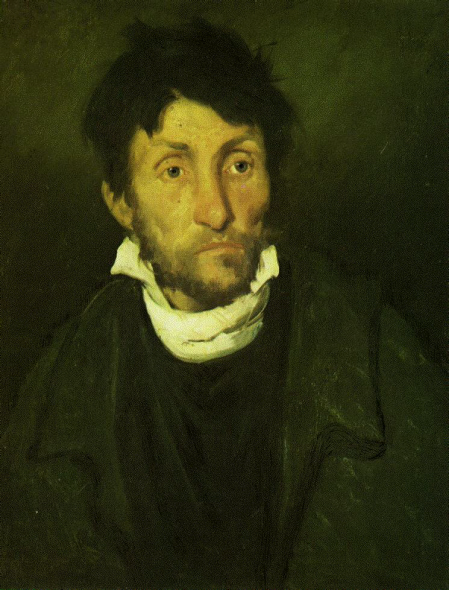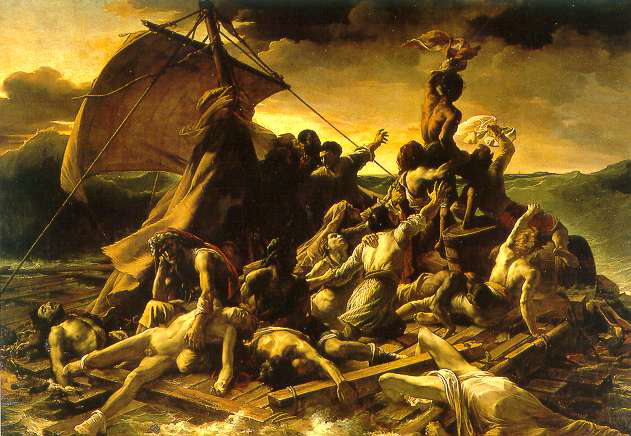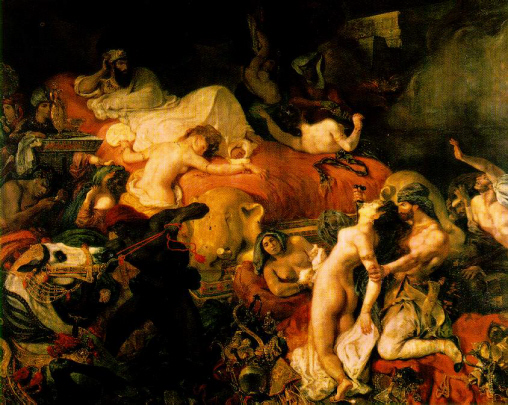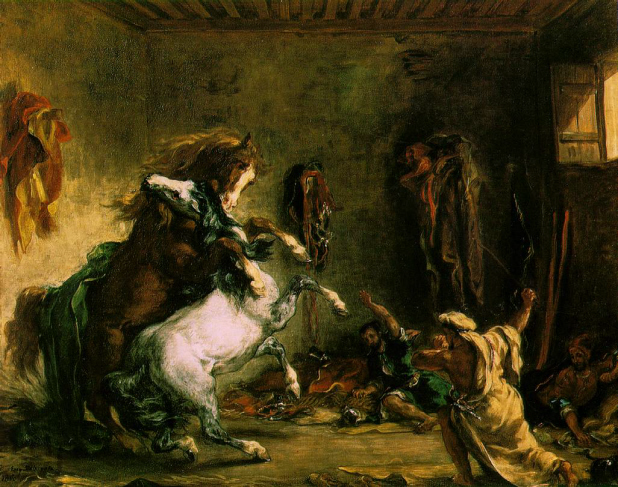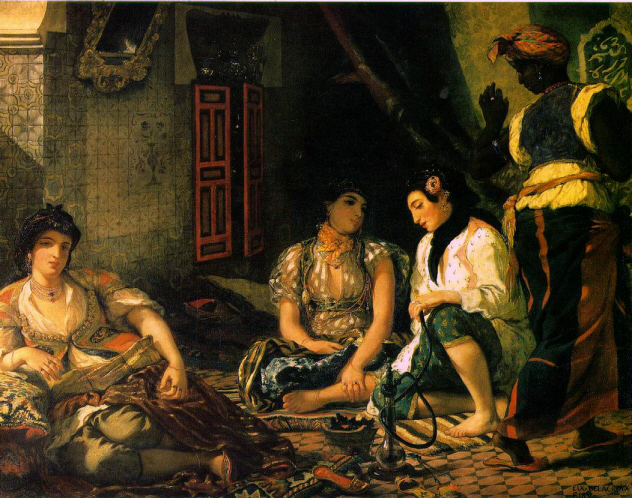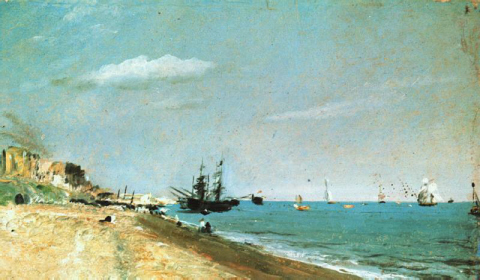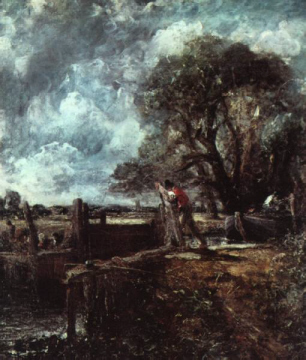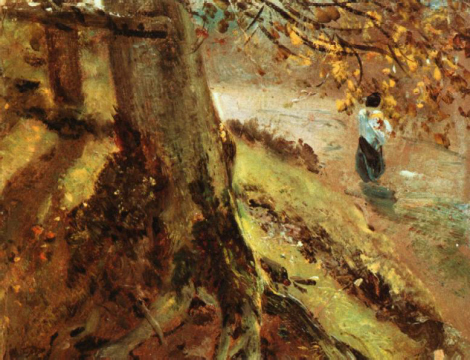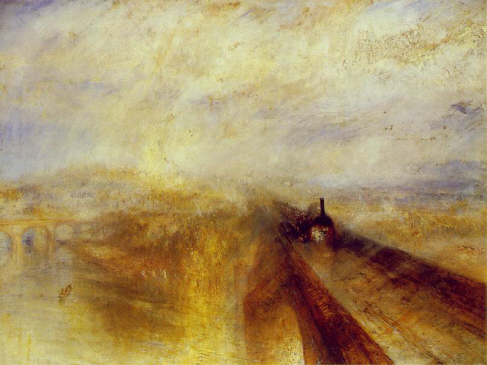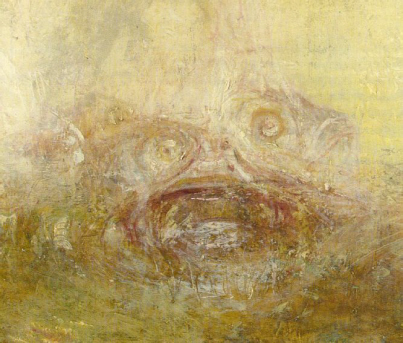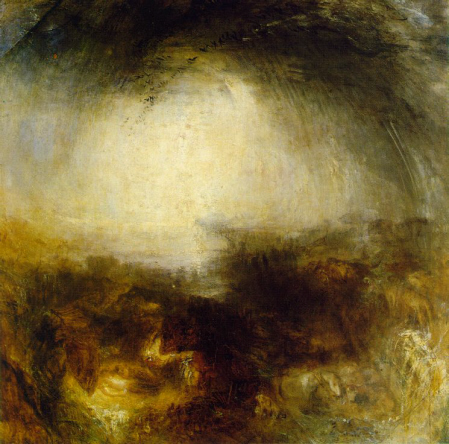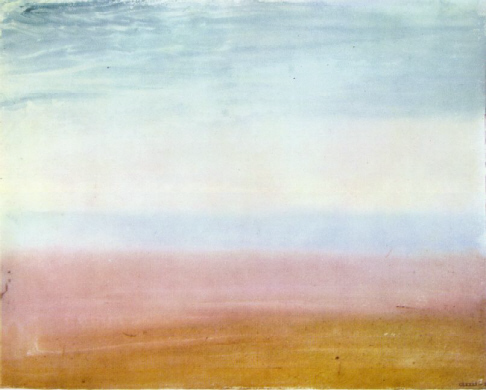Jean Louis André Théodore Géricault
Insane , 1821-24; Oil on canvas. Museum Van Schoone, Kunsten, Gent. (140 Kb)
The Raft of the "Medusa". 1818-1819. Oil on canvas. 490 x 720 cm. Louvre, Paris, France.
| The Derby at Epson. 1821. Oil on canvas. 92 x 123 cm. Louvre, Paris, France. |
Delacroix,Eugène, in full FERDINAND- VICTOR-EUGENE DELACROIX (b. April 26, 1798, Charenton-Saint-Maurice, Fr.--d. Aug. 13, 1863, Paris),
Liberty leading the People (90 Kb); Painted on 28 July 1830, to commemorate the July Revolution that had just brought Louis-Philippe to the French throne; Louvre.
시민을 이끄는 자유. 는 사모트라케의 니케처럼 승리를 상징.
프랑스 국기를 든 쟌다르크 같은 여인은 최후의 심판에서 오른팔을 높이 쳐든 예수의 몸짓을 연상
his painting, which is a sort of political poster, is meant to celebrate the day of 28 July 1830, when the people rose and dethroned the Bourbon king. Alexandre Dumas tells us that Delacroix's participation in the rebellious movements of July was mainly of a sentimental nature. Despite this, the painter, who had been a member of the National Guard, took pleasure in portraying himself in the figure on the left wearing the top-hat. Although the painting is filled with rhetoric, Delacroix's spirit is fully involved in its execution: in the outstretched figure of Liberty, in the bold attitudes of the people following herm contrasted with the lifeless figures of the dead heaped up in the foreground, in the heroic poses of the people fighting for liberty, there is without a doubt a sense of full participation on the part of the artist, which led Argan to define this canvas as the first political work of modern painting.
결국 1848년 2월 시민혁명으로...,
1827 (130 Kb); Oil on canvas, 392 x 496 cm; Musee du Louvre, Paris
<사르다나팔의 죽음> 기원전 9세기 앗시리아를 지배했던 왕
Arabian Horses Fighting in a Stable
1860 (160 Kb); Oil on canvas, 64.5 x 81 cm; Musee d'Orsay, Paris
1834 (170 Kb); Oil on canvas, (180 x 229 cm) (71 x 90 1/4"); Musee du Louvre, Paris
1832년 모로코 여행의 강렬한 인상. 유럽에서는 오래전에 사라진 고대의 세계가 그곳에서는 현재형으로 남아있기때문. 하렘은 여자들의 은밀한 규방을 의미.
John Constable
'His Majesty's Ship "Victory", Capt. E. Harvey, in the Memorable Battle of Trafalgar between two French Ships of the Line'. 1806. Watercolour on paper. Victoria and Albert Museum, London, UK.
Turner, John Mallord William (1775-1851). One of the finest landscape artists was J.M.W. Turner, whose work was exhibited when he was still a teenager. His entire life was devoted to his art. Unlike many artists of his era, he was successful throughout his career.
Joseph Mallord William Turner was born in London, England, on April 23, 1775. His father was a barber. His mother died when he was very young. The boy received little schooling. His father taught him how to read, but this was the extent of his education except for the study of art. By the age of 13 he was making drawings at home and exhibiting them in his father's shop window for sale.
Turner was 15 years old when he received a rare honor--one of his paintings was exhibited at the Royal Academy. By the time he was 18 he had his own studio. Before he was 20 print sellers were eagerly buying his drawings for reproduction.
He quickly achieved a fine reputation and was elected an associate of the Royal Academy. In 1802, when he was only 27, Turner became a full member. He then began traveling widely in Europe.
Venice was the inspiration of some of Turner's finest work. Wherever he visited he studied the effects of sea and sky in every kind of weather. His early training had been as a topographic draftsman. With the years, however, he developed a painting technique all his own. Instead of merely recording factually what he saw, Turner translated scenes into a light-filled expression of his own romantic feelings.
As he grew older Turner became an eccentric. Except for his father, with whom he lived for 30 years, he had no close friends. He allowed no one to watch him while he painted. He gave up attending the meetings of the academy. None of his acquaintances saw him for months at a time. Turner continued to travel but always alone. He still held exhibitions, but he usually refused to sell his paintings. When he was persuaded to sell one, he was dejected for days.
In 1850 he exhibited for the last time. One day Turner disappeared from his house. His housekeeper, after a search of many months, found him hiding in a house in Chelsea. He had been ill for a long time. He died the following day--Dec. 19, 1851.
Turner left a large fortune that he hoped would be used to support what he called "decaying artists." His collection of paintings was bequeathed to his country. At his request he was buried in St. Paul's Cathedral.
Although known for his oils, Turner is regarded as one of the founders of English watercolor landscape painting. Some of his most famous works are Calais Pier, Dido Building Carthage, Rain, Steam and Speed, Burial at Sea, and The Grand Canal, Venice.
빛으로 가득차있는 동적인 세계, 웅대한 자연의 가장 낭만적이고 숭고한 모습을 현란하고 화려한 세계로 표현.1842; Oil on canvas, 86.9 x 86.6 cm; Clore Gallery for the Turner Collection, London
1844; Oil on canvas, 90.8 x 121.9 cm; National Gallery, London
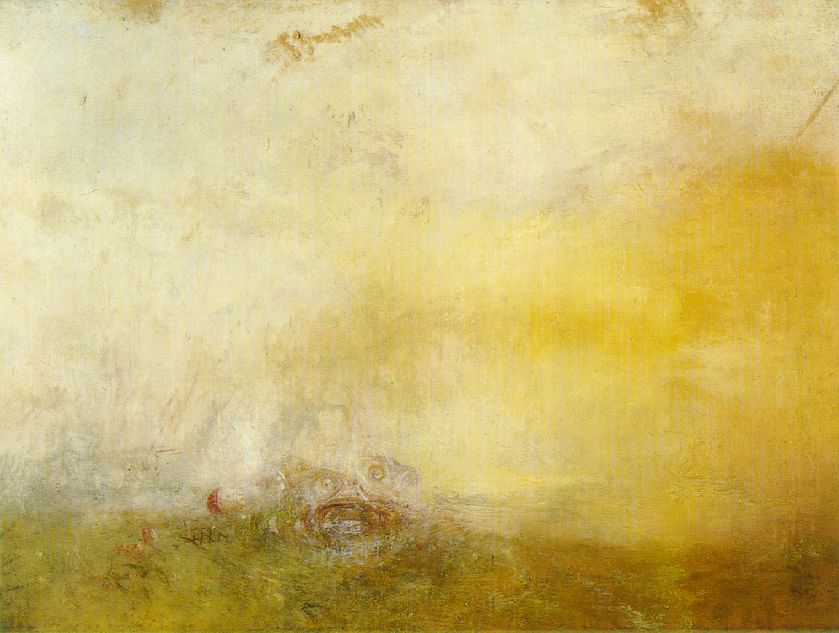
c. 1845; Oil on canvas, 91.5 x 122 cm; Tate Gallery, London
1840; Oil on canvas, 90.8 x 122.6 cm; Museum of Fine Arts, Boston
1842; Oil on canvas, 91.5 x 122 cm
1832; Oil on canvas, 90.9 x 121.4 cm; Yale Center for British Art, New Haven
1838; Oil on canvas, 91 x 122 cm; National Gallery, London
1835; Oil on canvas, 92 x 123 cm; Philadelphia Museum of Art
1829; Oil on canvas, 132.5 x 203 cm; National Gallery, London
1843; Oil on canvas, 78.5 x 78 cm; Tate Gallery, London
1819; Watercolor, 22.5 x 28.6 cm; Tate Gallery, London
1815; Oil on canvas, 155.5 x 232 cm; National Gallery, London
어렸을 때부터 느껴왔던 삶의 고통, 상처, 빈곤, 민중들의 희생. 누이의 죽음으로 정신병동에 간 터너의 엄마,
1800년대 초기 영국의 고통스런 현실을 화폭에 담는다. 심각한 실업문제, 나폴레옹 전쟁, 혼란 , 정치인이자 문학가인 월터 포커스의 노예무역 폐지에 동참.
강렬한 빛과 어둠. 혹한과 바람이 부는 겨울 풍경. 희망이라고는 보이지 않는 풍경.터너의 그림에서는 실체가 작아지고 나약한 인간을 표현. 산업혁명이 일어나면서부터 증기선을 그렸다. 1840년대 노예제 폐지로 인해 노예선을 그리며 말세의 풍경을 보여주는 작품을 하였다. 영국전통에서 벗어나 환각속의 ㅗ습을 표현하여 기이한 인물로 각인.
'History of Arts > 19C' 카테고리의 다른 글
| 19C- 신고전주의 (1) | 2020.06.15 |
|---|---|
| 19C- 자연주의 (0) | 2020.06.15 |
| 밀레 자연주의 (0) | 2020.06.15 |
| 19C- 사실주의 (0) | 2020.06.15 |
| 오노레 도미에 (0) | 2020.06.15 |
